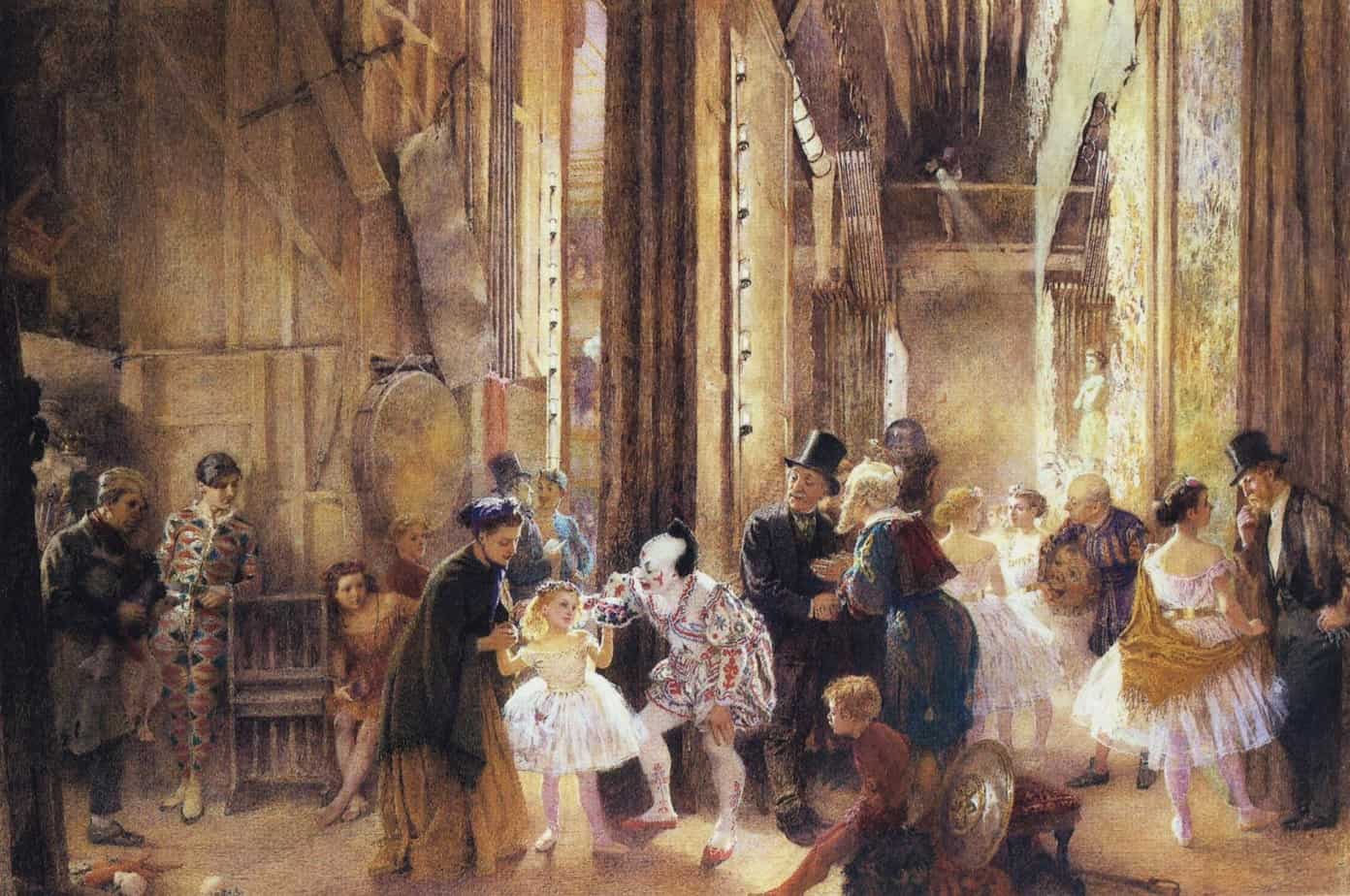Burlesque is a type of entertainment that caricatures serious works. It is an extreme form of parody. Burlesque can be used as a verb i.e. to burlesque something. You might accidentally burlesque yourself by buying expensive tennis gear then turning up with no idea how to play, for instance.
Comedy derives from the contrast and juxtaposition. It also derives from the fact that someone with enough money to buy expensive gear is brought down a peg when it is revealed they don’t have superior skills to match their superior equipment.
A BRIEF HISTORY OF BURLESQUE
The word derives from the Italian burlesco, in turn derived from burla — mockery. Starting in early 1700s Europe, ‘burlesque’ described musical works which juxtaposed and combined serious and comic elements. This achieved a grotesque effect.
‘Burlesque’ as a literary term became widespread in 17th century Italy and France, and later England. In literature, it was most popular during the Victorian era.
Today ‘burlesque’ is still used in music to indicate a bright or high-spirited mood, sometimes in contrast to seriousness.
Burlesque overlaps in meaning with caricature, parody and travesty and, in its theatrical sense, with extravaganza.
In modern usage, it can also mean a kind of striptease. What has this on-stage striptease got to do with the original meaning of the word? This entertainment is more properly called ‘American Burlesque’, a genre of variety show popularised in the late 1800s. The style derived from the ideas of Victorian burlesque, but by the 1900s it had evolved into a combination of satire, comedy, striptease, and musical theatre. It seems the striptease was the most popular part of this ‘variety show’, and now it’s the main thing left.
In modern popular culture, the most commonly represented form of burlesque in film and television is the parody. In fact, parodies have a massive presence in the popular film industry, especially films which parody older films.
WHAT IS THE PURPOSE OF BURLESQUE?
Burlesque has two distinct functions: to elevate or denigrate. 17th and 18th century burlesque was divided into two types: high and low. One elevates — the other denigrates.
High Burlesque
A literary, elevated manner is applied to a commonplace or comically inappropriate subject matter. A high burlesque ‘elevates’.
A shift from formal diction to a more direct and colloquial register might indicate high burlesque. The song below takes a music style from an earlier, more formal era (at least in the modern imagination) and eventually reveals itself to be about something slightly shocking.
(I had previously used the phrase ‘low brow’, then learned via the American Hysteria — @AmerHysteria — podcast that the terms ‘high brow’ and ‘low brow’ come from eugenics, and the idea that rich white Europeans had higher brow ridges. Much of our language is rooted in racism.
Low Burlesque
Low burlesque applies an irreverent, mocking style to a serious subject. It denigrates its subject. Also known as ‘Mocking satire‘.
Burlesque literature is much more than entertainment. It has been a major literary and dramatic technique for social activism and commentary for thousands of years; using humour to attract attention to serious and unresolved issues in society.
Burlesque can be used as a way to deliver opinions and messages to encourage change and awareness, all by presenting information through comedy that is often outrageous, unusual, and vulgar.
HOW DOES BURLESQUE HUMOUR WORK?
Burlesque makes audiences laugh because of the gap between the content and the form (the style and the substance).
Burlesque relies on the audience having prior knowledge about its subject — the writer assumes that the audience will understand the context and the theme.
Any time you see a style of narration which juxtaposes form and style, you’re dealing with burlesque comedy. For instance, a narrator might switch from formal diction to a direct and colloquial register, sometimes before the end of a sentence. The juxtaposition amuses. In novels, free indirect discourse is an excellent tool for authors who’d like to make use of burlesque humour in the narration.
EXAMPLES
Note that stories featuring cannibalism are often an indicator of burlesque sensibility.
Jane Austen’s Northanger Abbey
- A parody of gothic fiction
- Heroine Catherine Morland is a young woman with a vivid imagination. The author suggests this is caused by her love of gothic novels.
- Austen is mocking the popular Victorian view that literature could cause unrealistic ideas as a result of reading fiction (especially in young women).
- Today, Jane Austen’s work itself is parodied e.g. Pride, Prejudice and Zombies (2009) by Seth Grahame-Smith.
Shaun of the Dead (2004)
- A parody of the 1978 cult classic Dawn of the Dead
- Makes fun of the zombie flick genre by mimicking its style in an exaggerated way.
Not Another Teen Movie
- This movie takes teen movie tropes and plays them for laughs.
- There’s an entire category of film spoofs, spoofing other movies: Epic Movie, Austin Powers, Tropic Thunder.
- Scary Movie makes fun of serious but unrealistic teen horror films like Scream and I Know What You Did Last Summer.
MYTHOLOGICAL BURLESQUE
This term refers to Greek and Roman 4th century comedy. These comedies burlesqued traditional Greek mythical stories. They did very well in the Athenian theatre, especially between 400 and 340 BCE.
FEATURES OF THE MYTHOLOGICAL BURLESQUE
- Comedians refashioned well-known mythical tales according to the model of their contemporary Athenian society. This is now known as “Atticisation).
- The marvellous motifs of myths were given the rational treatment
- If marvellous motifs were kept, they were placed in a fully urbanised environment. This produced ludicrous incongruity.
- Comedians applied standard genre story structures to mythical material, so now mythical beings were seen as stereotyped stage figures in comic love plots. They were given happy endings.
Header painting: Charles Green – Her First Bouquet

